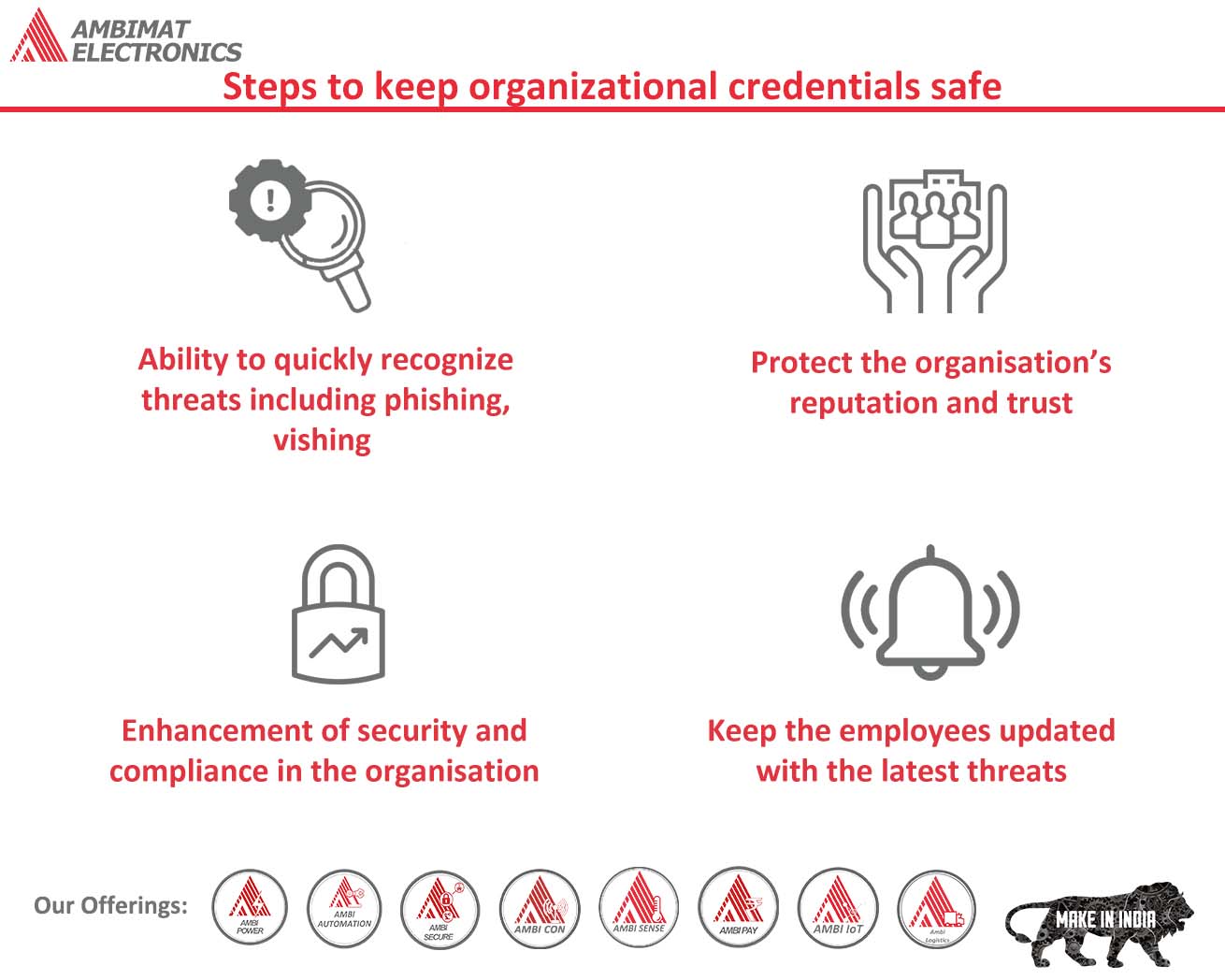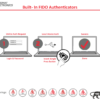Dear Readers,
This week’s blog is about how organizations are being forced to move away from passwords. As our digital footprints grow day by day, maintaining passwords itself is a tedious job. To keep it easy, users employ single passwords across applications. Data breaches and hacks these exposed users across platforms and placed enterprises at risk. So, a more straight forward, more robust, user-friendly authentication method is the need of the hour. Passwordless helps to accurately verify the user’s identity and eliminate the risk of compromised credentials.
Today, organizations are moving towards passwordless authentication, using advanced technologies such as biometric signatures, hardware tokens, cryptographic keys, or PINS toverify users.
The use of multi-factor authentication is vital, as it ensures that information is only accessed by the intended person, making it harder for cybercriminals to steal. If user data is less tempting, cyber thieves will go for a different one. Multi-factor authentication is a blend of two different factors. One is usually the username and password, which is something the user knows.
Ambimat Electronics, with its experience of over forty years, desires to draw the attention of its readers and potential customers towards this blog post about their new product called AmbiSecure key and how it will benefit us.
Steps to go passwordless
As we have already stated it before, but it bears repeating: going passwordless is a path, not an overnight change. Before even implementing it, understanding what passwordless authentication is and is not is vital before organization head further down to the path. However, the basic question still remains — where to begin?
To ensure a successful journey, proper planning and execution is required. The road to passwordless authentication is not similar for every organization, but there a several guidelines that will organization plot out the right path. The correct contextual data is required by organization to properly map, plan, and implement. There are several path to passwordless, fortunately for organization is that wherever they are, they can begin implementing it.
Let us look into the seven steps that organization can consider once decided to go passwordless, along with questions that evaluates the readiness while determining the solution best suited to meet organizational needs:
Reflect upon users and their use-cases
- How do the needs, behavior, and risks of your users differ?
- What kinds of devices are they using? Mobile phones, desktop computers, or shared workstations?
Key Takeaway: Different level of security is required for different users within the company, depending upon the device, passwordless authentication approach will deliver ideal user experience.
Accomplish cross-functional alignment
- What is the current Identity Access Management (IAM) solution?
- Does that IAM solution reside on-premises or in the cloud?
- What is the complexity of software supply chain?
- Are all technical resources available to implement passwordless solution?
Key Takeaway: Smart cards are the best solution for organizations if they only have on premises solution. For cloud-based platforms, organizations should opt for FIDO2 and WebAuthn compliant security keys. There are hardware security keys that supports both needs simultaneously as well as in mixed infrastructure.
Plan for distribution models and requirements
- What is the location of your users? Do they work remotely or in offices?
- In what ways will users receive any authentication hardware that might be needed for access?
- Will the delivery, distribution, and activation of hardware be in-house or outsourced?
Key Takeaway: Passwordless deployment is directly linked to employees work location—working from home or office. The distribution and registration of security keys, especially for remote workers should be considered early from start.
Training and support should be carefully planned
- What is training and support provided to users when the journey to passwordless is decided?
- Will there be any sort of communication plan to support users?
Key Takeaway: The ideal solution is to get an early start with HR and other stakeholders for a clear communication. This will help in preparing users on what is about to take place before deployment.
Evaluate Success
- In what ways will the progress and success of passwordless deployment be measured?
- How will organization determine specific metrics?
Key Takeaway: One of the most common metrics is about saving time and cost-effective, other metrics will be different for each organization. Equipment saving, IT hours saved, onboarding resources saved are just few examples.
Additional technical services should be considered
- Would industry expertise accelerate and enhance passwordless journey
Key Takeaway: Depending on the expertise your current staff has, consider consulting vendors who have assisted other enterprises with passwordless implementation. Depending upon the timeline, organizations should put aside extra budget for attaining technical services. If there is no deadline to meet, organization can move slowly for deployment, however, if the implementation is compliance-driven, or due to breach then technical services can increase the speed of passwordless journey.
The market for passwordless solutions offers a diverse range of options, which can be overwhelming, confusing, and stressful for many enterprise IT managers. There are several vendors aiming to simplify the process to the best of their ability. They provide state-of-the art cryptographic solution and support to help organization in their journey to passwordless all the way.
Passwordless Solution with AmbiSecure
FIDO2 is a standard that simplifies and secures user authentication. It uses public-key cryptography to protect from phishing attacks and is the only phishing-proof factor available. Corporations around the world and across many sectors, including healthcare, can benefit from Fast Identity Online or Fast ID Online (FIDO) authentication, which their employees and users can use to minimize security risks, and improve overall user experience. The AmbiSecure key and card is FIDO certified which offers superior security by combining hardware-based authentication and public key cryptography to effectively defend against phishing attacks and eliminate account takeovers.
AmbiSecure helps organizations accelerate to a password-less future by providing FIDO2 protocol support. Not only does FIDO2 supports two-factor authentication, but also paves the way for eliminating weak password authentication, with strong single-factor (passwordless) hardware-based authentication. The AmbiSecure provides a simple and intuitive authentication experience that users find easy to use, ensuring rapid adoption and organizational security. Ambisecure key or card does not require a battery or network connectivity, making authentication always accessible.




